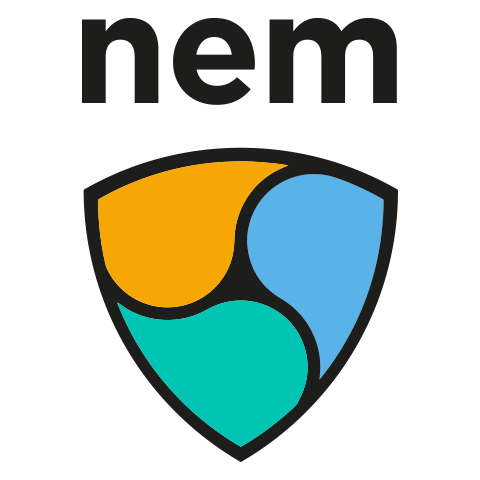Why The NEM Blockchain is amazing(Englisch/Dutch)
THE NEM BLOCKCHAIN
NEM is a peer to peer crypto currency and block chain platform that was launched on March 31, 2015. In January 2014 a group of developers decided against forking Nxt and instead wrote a new codebase from scratch.
When NEM was launched in early 2015, the team was reported to be large, having over 15 developers and almost 30 marketers or translators. Its original name was “New Economy Movement,” but they later adjusted it and only called it NEM for short and have been used since then.
The focus of the NEM project has always been to unleash the power of the block chain technology as a priority and quickly allow projects to build applications on top of this platform and realize the power of the block chain technology.
NEM was designed to incorporate some critical elements that have been subject to neglect, and this includes
- Scalability
- Secure, fast and easy to build on.
- The support of a standard API based on open standards simplifies the adoption for developers.
In late 2015, some core NEM developers began working with Tech Bureau Corp on Mijin. Mijin is the first private block chain project based on NEM technology. In 2016, several Japanese banks ran successful experiments on Mijin, which achieved 1,500 transactions per second with 2.5 million virtual bank accounts.
A major factor that has allowed NEM to transform into one of the most popular altcoins in Japan is its development team and company which is composed of Japanese founders and talents.
NEM was initially developed and introduced in Japan by Makoto Takemiya, the co-founder, and CEO of Soramitsu, the company that has also launched the Iroha block chain project to the Linux Foundation's Hyperledger Project.
NEM is regarded as the best of breed solution that not only serves a significant role as a block chain technology but also sets a new standard for the block chain technology.
For over three years NEM has been analysing the financial industry, long before the sector itself took cognisance of the impact of block chain and the role it can play. The 3-year extended analysis and assessment point to an essential conclusion from where we now unveil this blockchain platform as an important means to an end.
GOALS
These goals were drawn upon the following important conclusions:
• Smart contracts have long been in existence in all financial institutions. They have been programmed into the core banking solution (automated) or acted upon manually based on agreements and protocols between parties, internally or externally.
These smart contracts cost financial institutions billions of dollars to set up the infrastructure over the years, and to be able to transcribe that to a new platform will incur much more resources, time, and risks. It is a complicated web of work that is not entirely possible to just change instantaneously.
NEM has recognized this and is approaching it in another manner. The approach here is to make the smart contract an external component, whether centralized (i.e., status quo with existing systems) or decentralized. The outputs of these smart contracts will then enter their transactions into the ledger through a secure transaction process.
• Build a platform that is inexpensive to deploy with minimal risk, time, and resources, while at the same time allow a financial institution to carry on business as usual with minimal interruptions – enabling organic growth.
• Create a blockchain platform with multiple ledgers for various use cases – mutually exclusive or not – and at the same time, allowing transactions between ledgers to be frictionless.
• Create one single abstraction layer for all the ledgers in this same blockchain to be integrated into any existing core banking system and solutions.
• Recognize privacy and allow each financial institution to control and manage its very own blockchain platform.
• Allow for seamless cross-platform transactions, payments, and settlements through direct transactions without the need to implement an expensive, standards and protocol driven messaging system. The result is a reduced infrastructure system with settlement finality as well as less reconciliation work, risks, and errors.
TECHNOLOGY
NEM was Written in Java but is currently rewritten in C++ version NEM stated that one of its goals was a wide distribution model and has introduced new features to blockchain technology such as its proof-of-importance (POI) algorithm, multi-signature accounts, encrypted messaging, and an Eigentrust ++ reputation system.
Catapult is an extension of the NEM blockchain technology that was launched in March 2015. It will be released in different stages which will start from the first quarter of 2017. Its predecessor is Mijin, which itself had undergone vigorous tests. Mijin and Catapult are permissible block chains.
The difference between Mijin and catapult is that the latter is an extension of the NEM public block chain. Catapult is the reverse, and it shall be an extension of the single chain into the NEM open chain. It is specially designed to add more functions and features to support the financial industry where critical features and roles are required of the blockchain.
Catapult is re-written entirely new in the C++ language taking the core concepts from its first generation NEM release, combining these ideas from lessons learned, and amending and extending these concepts to enhance its performance.
At the end, the objective is to have a secure enterprise-class solution with open connectivity and high performance. Some of the more notable feature highlights that are being developed now for Catapult include:
• High scalability, design based on the industry standard tiered web architecture commonly found in enterprise computing, a holistic offering yet to be seen in any blockchain solution
• Introduction of a high performance and highly scalable API gateway server layer with an open integration architecture
• High throughput message queues for real-time analysis and big data analytics of transactions
• Use of NoSQL database at the API layer, which is more suited for high speed messaging
• Embedded escrow service for exchange of assets on the block chain – an individual transaction contract
• High transaction rates (more than 3000 transactions per second)
I think that NEM will be a big giant in the cryptospace.
DE NEM BLOCKCHAIN (Nederlands)
NEM is een peer-to-peer-crypto-valuta- en blockchainplatform dat op 31 maart 2015 gelanceerd werd. In januari 2014 heeft een groep ontwikkelaars besloten om Nxt te verjagen en in plaats daarvan een nieuwe code te schrijven.
Toen NEM begin 2015 werd gelanceerd, bleek het team groot te zijn, met meer dan 15 ontwikkelaars en bijna 30 marketeers en vertalers. De oorspronkelijke naam was "New Economy Movement", maar ze hebben het later aangepast en noemde het gewoon NEM.
De focus van het NEM-project is altijd om de kracht van de blockchain als prioriteit te ontgrendelen en snel projecten toe te laten om applicaties te bouwen bovenop dit platform en de kracht van de blockchaintechnologie te realiseren. NEM is ontworpen om een aantal kritische elementen op te nemen, en dit omvat:
- Schaalbaarheid
- Veilig, snel en makkelijk op te bouwen.
- De ondersteuning van een standaard API op basis van open standaarden. Het vereenvoudigt de goedkeuring voor ontwikkelaars.
Eind december 2015 begonnen enkele core NEM ontwikkelaars samen te werken met Tech Bureau Corp op Mijin. Mijin is het eerste private blockchainproject gebaseerd op NEM-technologie.
In 2016 liepen verscheidene Japanse banken succesvolle experimenten op Mijin, die 1,500 transacties per seconde behaalde met 2,5 miljoen virtuele bankrekeningen.
Een belangrijke factor die NEM heeft omgezet in één van de meest populaire altcoins in Japan is zijn ontwikkelings team en bedrijf dat bestaat uit Japanse oprichters en talenten.
NEM werd oorspronkelijk ontwikkeld en geïntroduceerd in Japan door Makoto Takemiya, medeoprichter en CEO van Soramitsu, het bedrijf dat ook het Iroha-blockchainproject gelanceerd heeft op het Hyperledger Project van de Linux Foundation.
NEM wordt beschouwd als de beste rasoplossing die niet alleen een belangrijke rol speelt als blockchaintechnologie, maar ook een nieuwe standaard is voor de blockchaintechnologie. Al meer dan drie jaar heeft NEM de financiele industrie geanalyseerd, al lang voordat de sector in de gaten kreeg welke invloed de blockchain en welke rol die het kan spelen.
De 3-jarige uitgebreide analyse en evaluatie wijzen op een essentiële conclusie van waar we nu dit blockchain-platform onthullen als een belangrijk middel.
DOELEN
Deze doelen werden getrokken op de volgende belangrijke conclusies:
• In alle financiële instellingen zijn er slimme afspraken geweest. Ze zijn geprogrammeerd in de kernbankoplossing (geautomatiseerd) of handelen handmatig op basis van afspraken en protocollen tussen partijen, intern of extern.
Deze slimme contracten kosten financiële instellingen miljarden dollars om de infrastructuur door de jaren heen op te zetten, en om dat te kunnen overdragen naar een nieuw platform zullen veel meer middelen, tijd en risico's nodig zijn.
Het is een ingewikkeld web van werk dat niet helemaal mogelijk is om direct te veranderen. NEM heeft dit herkend en benadert het op een andere manier.
De aanpak hier is om het slimme contract een extern onderdeel te maken, of het nu centraal staat (dat wil zeggen status quo met bestaande systemen) of gedecentraliseerd. De uitkomsten van deze slimme contracten zullen dan hun transacties in de grootboek invoeren via een beveiligingsproces.
• Bouw een platform dat goedkoop is om te implementeren met minimaal risico, tijd en middelen, terwijl tegelijkertijd een financiële instelling toelaat om zoals gebruikelijk zaken te doen met minimale onderbrekingen - waardoor organische groei mogelijk is.
• Maak een blockchain platform met meerdere grootboeken voor verschillende gebruikers - wederzijds exclusief of niet - en tegelijkertijd, waardoor transacties tussen grootboeken wrijvingloos kunnen zijn.
• Creëer een enkele abstractielaag voor alle grootboeken in hetzelfde blokgebied om te integreren in voor elk bestaand core banking systeem en oplossingen.
• Herken de privacy en laat elke financiële instelling toe om zijn eigen blockchain platform te beheersen en te beheren.
• Toegestaan voor naadloze transacties op het platform, betalingen en afwikkelingen via directe transacties zonder de noodzaak om een duur, normen en protocol gedreven berichten systeem te implementeren.
Het resultaat is een verlaagd infrastructuursysteem met afwikkelingsfinaliteit en minder verzoeningswerk, risico's en fouten.
TECHNOLOGIE
NEM was geschreven in Java, maar is momenteel herschreven in C ++ versie. NEM verklaarde dat een van de doelen was een breed distributiemodel en nieuwe eigenschappen te introduceren om technologie te blokkeren, zoals het algoritme voor het bewijs van belang (POI), multi-signature accounts, Gecodeerde berichten, en een Eigentrust ++ reputatiesysteem.
Catapult is een uitbreiding van de NEM blockchain technologie die in maart 2015 werd gelanceerd. Het wordt in verschillende fasen vrijgelaten dat vanaf het eerste kwartaal van 2017 zal starten.
De voorganger is Mijin, die zelf krachtige tests had ondergaan. Mijin en Catapult zijn toegestane blokketens. Het verschil tussen Mijin en katapult is dat deze een uitbreiding is van de NEM-openbare blockchain. Catapult is omgekeerd, en het zal een verlenging van de enkele chain zijn in de NEM open ketting.
Het is speciaal ontworpen om meer functies toe te voegen om de financiële industrie te ondersteunen waar kritieke eigenschappen en rollen van de blockchain nodig zijn.
Catapult wordt volledig nieuw geschreven in de C ++ taal, waarbij de kernbegrippen uit de eerste generatie NEM-versie worden opgenomen, die deze ideeën combineren uit de geleerde lessen, en het wijzigen en uitbreiden van deze concepten om zijn prestaties te verbeteren.
Op het einde is het doel om een veilige enterprise-class oplossing te hebben met open connectiviteit en hoge prestaties. Enkele van de meer opvallende kenmerkende hoogtepunten die nu worden ontwikkeld voor Catapult zijn:
• Hoge schaalbaarheid, ontwerp gebaseerd op de industrie standaard-gebaseerde webarchitectuur die vaak voorkomt in enterprise computing, een holistisch aanbod dat nog te zien is in een blockchain oplossing.
• Inleiding van een high performance en zeer schaalbare API gateway met een open integratie architectuur.
• Wachtrijen voor high-throughput-berichten voor real-time analyse en grote data analyse van transacties.
• Gebruik van de NoSQL-database bij de API, die meer geschikt is voor high speed berichten.
• Embedded escrow-dienst voor de uitwisseling van activa op de blokketen - een individueel transactiecontract.
• Hoge transactiesnelheden (meer dan 3000 transacties per seconde)
Ik denk dat NEM een van de grote spelers is binnen de cryptowereld en er een mooie toekomst in het vizier ligt.










Hello! I just upvoted you! Upvote this comment and follow me! i will upvote your future posts! To any other visitor, upvote this post also to receive free UpVotes from me! Happy SteemIt!
Thanks for the information😉😉